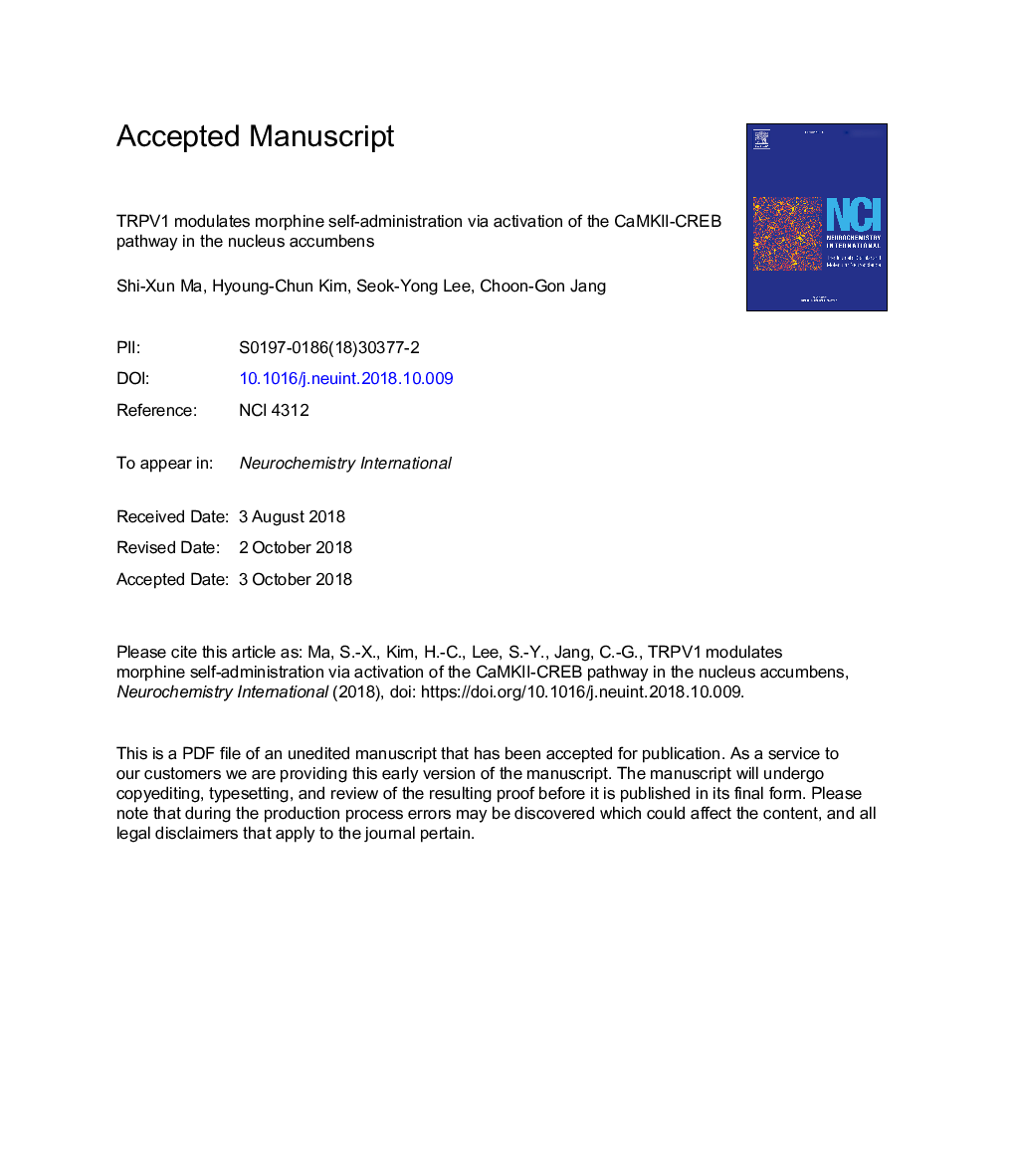| Article ID | Journal | Published Year | Pages | File Type |
|---|---|---|---|---|
| 11008695 | Neurochemistry International | 2018 | 32 Pages |
Abstract
Opioid addiction is a growing problem for public health, and opioids have correspondingly become more heavily regulated over time. We have previously shown that TRPV1 plays a critical role in morphine addiction using a self-administration paradigm in rats, and the current study evaluates the effects of the TRPV1 signaling pathway on morphine self-administration (SA). We found that treatment with a selective TRPV1 antagonist, SB366791, significantly decreased the morphine SA-induced activation of Ca2+/calmodulin-dependent protein kinase II (CaMKII), Akt and the cAMP response element binding protein (CREB) in the nucleus accumbens (NAc). In addition, phospho-PKA and phospho-PKC expression levels were significantly increased in the NAc of the morphine-SA groups, regardless of SB366791 treatment. Finally, local microinjection of SB366791 into the NAc significantly suppressed the maintenance of morphine SA. Taken together, our findings highlight that TRPV1 plays an important role in morphine addiction, likely via activation of the CaMKII-CREB pathway in the NAc.
Related Topics
Life Sciences
Biochemistry, Genetics and Molecular Biology
Cell Biology
Authors
Shi-Xun Ma, Hyoung-Chun Kim, Seok-Yong Lee, Choon-Gon Jang,
